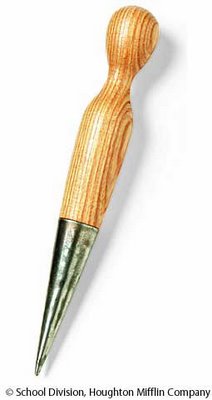The Root of the Matter
In Newfoundland, a hard, cold climate and a rocky soil mean that in the winter you once had to depend on foods that were preserved or that kept well: a traditional Christmas dinner still consists of things that you could harvest on the spot (which is to say the turkey, goose, or other beast) and things that would keep for a long time in the root cellar (which is to say root vegetables), plus, occasionally, canned foods. Those are the only things allowed. You can't serve, say, a nice leafy salad, or string beans or Brussels sprouts. My mother and stepfather generally go to Florida every winter; one year she invited a friend over to Christmas dinner, and this friend offered to bring a dish. Reporting this to me, my mother said in some mixture of horror and astonishment, "She brought broccoli!"
Yesterday, while Jim and I were preparing Christmas dinner (turkey, potatoes, carrots, turnip, sweet potatoes, cranberry sauce), I idly wondered whether the "-nip" in "turnip" was the same as that in "parsnip". It seemed likely--no, obvious--that they were related at least tangentially, and they are. Sort of.
The "tur-" in "turnip" remains a mystery, but the "-nip" is, in fact, a variant of the old word for "turnip", "nepe". (In Scotland, if I am not much mistaken, turnips are still called "neeps".) The second syllable of "parsnip" was influenced by the word "nepe" or "nep", and the word itself comes from French "pasnaie", which itself is derived from a Latin word, "pastinum", which is, according to Answers.com, "a kind of two-pronged dibble".
What the hell? "Dibble"? If ever a word looked made-up, that's it.

But, in fact, a dibble is a gardening tool use to make conical holes in the ground in which to drop bulbs and corms, and damned if it doesn't sort of look like a parsnip. Or vice versa.
While we're at it, "rutabaga", a rather mysterious-looking word which we use interchangeably with "turnip" (though they aren't exactly the same thing, and a rutabaga is thought to be a cross between a turnip and a cabbage), is in fact Swedish for, of all things, "root" plus "bag". Rutabaga = rootbag!
Wait a minute: how could you cross a turnip and a cabbage? Just look at them--they aren't even related! Wouldn't that be like crossing a daisy and a lemon-tree? Well, you can cross a turnip and a cabbage because, in fact, they are related: they're both members of the family Cruciferae. Now, those first two syllables look like "crucifix", and they should, because they're from the same word--the Latin word for "cross", which is "crux" (also the source of "crucial" and "crucify"). Cruciferous vegetables have four-petaled flowers in the shape of a cross; you can't tell by looking at the vegetables, though. (Mustard is also a member of the family Cruciferae, as are kohlrabi, kale, and delicious, though un-Christmasy, broccoli.)
Yesterday, while Jim and I were preparing Christmas dinner (turkey, potatoes, carrots, turnip, sweet potatoes, cranberry sauce), I idly wondered whether the "-nip" in "turnip" was the same as that in "parsnip". It seemed likely--no, obvious--that they were related at least tangentially, and they are. Sort of.
The "tur-" in "turnip" remains a mystery, but the "-nip" is, in fact, a variant of the old word for "turnip", "nepe". (In Scotland, if I am not much mistaken, turnips are still called "neeps".) The second syllable of "parsnip" was influenced by the word "nepe" or "nep", and the word itself comes from French "pasnaie", which itself is derived from a Latin word, "pastinum", which is, according to Answers.com, "a kind of two-pronged dibble".
What the hell? "Dibble"? If ever a word looked made-up, that's it.

But, in fact, a dibble is a gardening tool use to make conical holes in the ground in which to drop bulbs and corms, and damned if it doesn't sort of look like a parsnip. Or vice versa.
While we're at it, "rutabaga", a rather mysterious-looking word which we use interchangeably with "turnip" (though they aren't exactly the same thing, and a rutabaga is thought to be a cross between a turnip and a cabbage), is in fact Swedish for, of all things, "root" plus "bag". Rutabaga = rootbag!
Wait a minute: how could you cross a turnip and a cabbage? Just look at them--they aren't even related! Wouldn't that be like crossing a daisy and a lemon-tree? Well, you can cross a turnip and a cabbage because, in fact, they are related: they're both members of the family Cruciferae. Now, those first two syllables look like "crucifix", and they should, because they're from the same word--the Latin word for "cross", which is "crux" (also the source of "crucial" and "crucify"). Cruciferous vegetables have four-petaled flowers in the shape of a cross; you can't tell by looking at the vegetables, though. (Mustard is also a member of the family Cruciferae, as are kohlrabi, kale, and delicious, though un-Christmasy, broccoli.)

0 Comments:
Post a Comment
<< Home